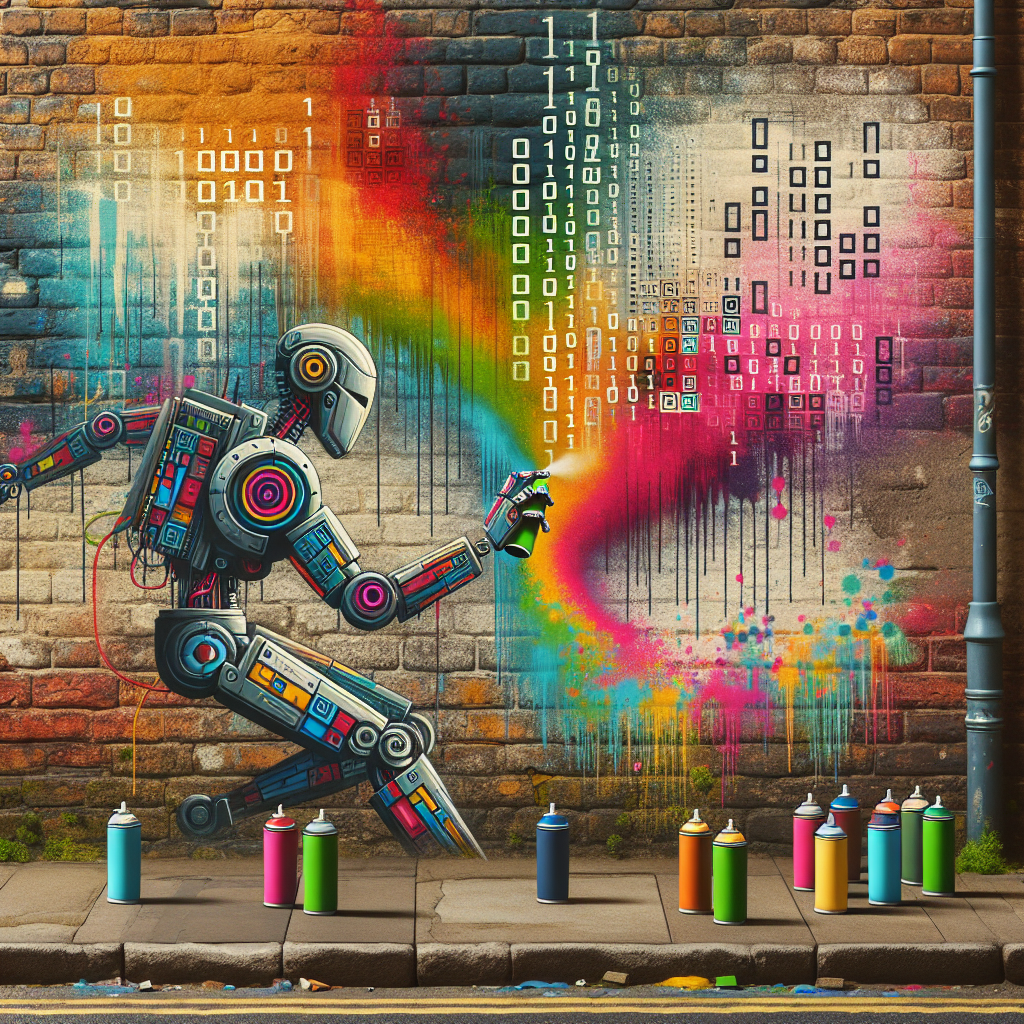Artificial intelligence (AI) is revolutionizing the way we create and consume art in the digital age. One particular form of art that has been greatly impacted by AI is street art. Graffiti, which has long been associated with urban culture and rebellion, is now being reimagined and transformed by the capabilities of AI technology.
AI algorithms are being used to create stunning murals and graffiti designs that push the boundaries of traditional street art. From generating unique designs to creating interactive installations, AI is giving artists new tools to express themselves and engage with audiences in innovative ways.
One of the key ways in which AI is influencing street art is through the use of machine learning algorithms. These algorithms can analyze vast amounts of data and generate unique designs based on patterns and styles found in existing graffiti art. This allows artists to create intricate and visually striking pieces that would be difficult to achieve through traditional means.
Additionally, AI-powered robots are being used to paint murals and graffiti on walls and buildings. These robots are able to precisely replicate complex designs and patterns, bringing a level of precision and detail to street art that was previously unattainable. This technology is also making it easier for artists to create large-scale installations and murals in a fraction of the time it would take using traditional methods.
Another way in which AI is impacting street art is through the use of augmented reality (AR) technology. AR allows artists to overlay digital images and animations onto physical spaces, creating immersive and interactive art experiences for viewers. By combining AI algorithms with AR technology, artists can create dynamic and ever-changing graffiti designs that respond to the environment and the audience in real-time.
One of the most exciting developments in AI-powered street art is the use of generative adversarial networks (GANs) to create collaborative art projects. GANs are a type of AI algorithm that pits two neural networks against each other to generate new and original designs. Artists can use GANs to collaborate with AI systems, creating hybrid artworks that blend human creativity with machine intelligence.
FAQs:
Q: How is AI being used in street art?
A: AI is being used in street art in a variety of ways, including generating unique designs, painting murals with robots, and creating interactive installations using AR technology.
Q: What are some examples of AI-powered street art?
A: Some examples of AI-powered street art include murals painted by robots, interactive installations that respond to the environment, and collaborative art projects created using GANs.
Q: How is AI impacting the traditional graffiti art form?
A: AI is pushing the boundaries of traditional graffiti art by enabling artists to create intricate and visually striking designs that would be difficult to achieve using traditional methods.
Q: What are the benefits of using AI in street art?
A: The benefits of using AI in street art include the ability to create unique and innovative designs, paint large-scale murals with precision, and engage audiences in new and interactive ways.
Q: Will AI replace human artists in street art?
A: While AI is changing the way artists create and engage with street art, it is unlikely to replace human artists entirely. AI is a tool that can enhance human creativity and push the boundaries of what is possible in art.
In conclusion, AI is revolutionizing street art in the digital age, giving artists new tools and techniques to create innovative and visually stunning graffiti designs. From generating unique artworks to painting murals with robots, AI is pushing the boundaries of traditional street art and creating new possibilities for expression and collaboration. As technology continues to evolve, the intersection of AI and street art will only continue to grow, leading to even more exciting and groundbreaking art forms in the future.

